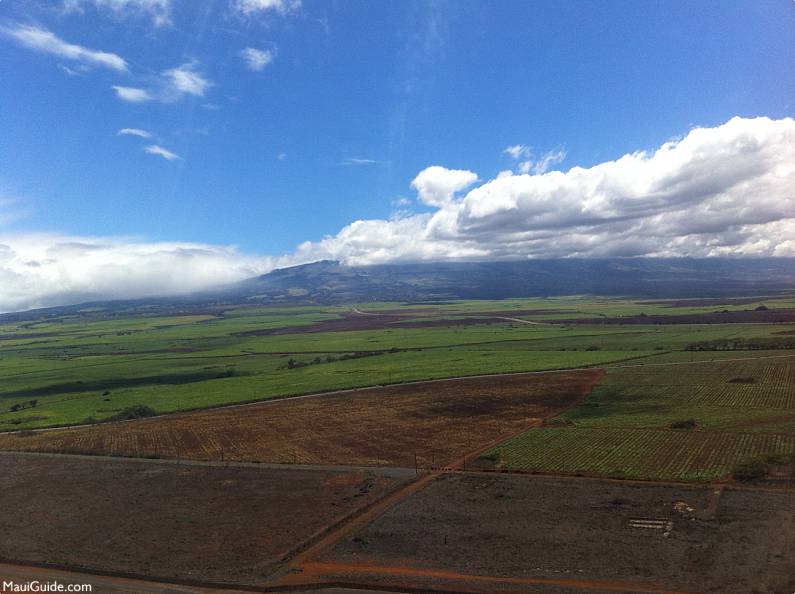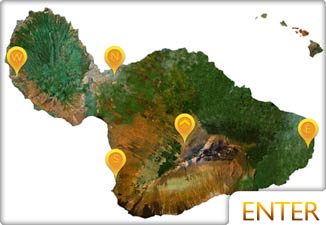Maui > Nature > Invasive Species > Little Fire Ant

Little Fire Ant
Little fire ants (LFA) are stinging ants that are new to Hawai’i and spreading. They are transported to new sites in potted plant materials or rubbish. They can be serious nuisances when they infest house lofts or agricultural fields, and they will move into houses when their numbers are large.
About Little Fire Ants
These tiny ants tend to get under your clothes and can get in your eyes. Initially, their sting hurts and burns strongly. It usually causes intense itching that can last for two weeks or more. Little Fire Ant stings are also known to harm animals, including pets and livestock; multiple stings in the eyes can cause blindness in pets or even the death of newly born small animals. While no serious injuries to people from LFA stings have been reported, those who might have an anaphylactic allergic reaction (particularly if they are very young or old, or in poor health) could suffer serious harm.
The ants climb up into plants of all sizes, including trees. They drop off easily when the plants are disturbed, and they can rain down on you in large numbers when you are pruning branches, harvesting fruit, or picking flowers. Some orchard workers in East Hawaii have quit their jobs because of this.
In the Galapagos Islands, when the LFA population is large, workers are prevented from harvesting coffee.
A heavy infestation can make a property difficult to use commercially or enjoy recreationally. Casual dress is best avoided where LFAs have taken hold – gloves, boots, and full-body covering are needed in severely infested areas, where any contact with foliage, including sitting on lawns, can invite a sting. A Little Fire Ant infestation is a “disclosure issue” in property sales.
The little fire ant is native to Central and South America, but it has spread around the Pacific. It was first noticed in Hawaii in 1999 at Hawaiian Paradise Park in Puna. Although the Hawaii Department of Agriculture worked to contain the initial infestations, the ant had already been spread, inadvertently, from infested plant nurseries.

Currently, there are more than 50 known LFA infestations in East Hawaii, one on Kauai, and probably many more on Hawaii that have yet to be discovered and reported. An eradication effort at Kalihiwai on Kauai is ongoing, but steep terrain hampers the effort. On the island of Hawaii, limited agency resources and personnel and continuing spread of the ants on infested plant material make it virtually impossible to have a wide-scale government program sufficient to eradicate this pest. People who own or live on the lands that the Little Fire Ant has infested must be willing to put serious, sustained effort into controlling them.
Identifying the little fire ant
Another stinging red ant, the tropical fire ant (Solenopsis geminata), locally called “red ant,” is common in Hawaii. Tropical fire ants are irritating but much less harmful than LFA.
Little fire ants are:
• Tiny red-orange ants 1/16 inch long (about as long as a penny is thick); tropical fire ants are more than twice the size, 1/8-1/4 inch long
• Slow-moving
• The workers are all the same small size, unlike tropical fire ants, which have a few larger workers with bigger heads.
You can help by looking out for little fire ants, reporting their presence, and helping to control new infestations.
Examining the roots of potted plants for LFA is helpful, but the best way to detect LFA is to place a peanut butter–coated bait on the surface of the pot for an hour to see if it attracts ants. Whenever you have purchased a new plant, this would be a reasonable precaution. If you have LFA, do not transport any plants or plant materials to other locations.

Detecting the little fire ant
Step 1:
Smear a thin coat of peanut butter on one end of some wooden chopsticks or popsicle sticks (a thick coat isn’t better).
Step 2:
Place the stick around your property, preferably in the shade, in plants, and at the bases of trees. Check the sticks after about an hour.
Step 3:
Pick up chopsticks with ants – carefully or they will fall off – and put them in a sealable plastic bag. Examine the ants on the peanut butter.
• Are they red-orange?
• Are they no longer than 1/16 inch (the thickness of a penny)?
• Are they slow-moving and do they fall off the chopstick easily when you tap the side of the stick?
Step 4:
If you can answer YES to these questions, then you may have the little fire ant. Seal the plastic bag, write your name and phone number on the bag, and place it in the freezer overnight to kill the ants. Please do not transport live ants.
To have the identification of the ants confirmed, drop off the bag at one of the Hawaii Department of Agriculture (HDOA) offices.
Controlling the little fire ant
It is very important that you seek expert advice if you believe you have an LFA infestation. HDOA field staff should be called to confirm it, record it, and advise you on how to deal with it.
CAUTION: Do not treat the ants with pesticides until the population has been reported and mapped, or the extent of the infestation will not be known.
Little fire ants are relatively easy to suppress in small areas, but they can be very difficult to eradicate completely. Mapping the infestation on your property (or in your neighborhood) should be done before any pesticide is applied, or the extent of the infestation will not be known, and it will be harder to contain or eradicate it. Inform your neighbors once you have confirmed that LFA is present, and work cooperatively with them to combat the infestation.
Products such as siege Pro and Amdro Pro (both hydramethylnon), Extinguish Plus (hydramethylnon and methoprene), Esteem Ant Bait (pyriproxyfen), and Conserve Professional Fire Ant Bait (spinosad) have been successfully used to control LFA infestations. These are granular baits that can be purchased at some hardware and garden stores or agrichemical supply companies. Foraging worker ants are attracted to the bait and carry it back to the nest, feeding it to other ants and the queen. Colonies can be killed in less than two weeks, but eradicating entire infestations requires consistent applications of bait in dry weather.
The location where bait is used, whether near a food crop or at another site, must be allowed in the directions for use on the product label or on supplemental or “special local need” (SLN) labels that may be available. Read the label’s directions carefully before you purchase or use the product. For help in assessing the suitability of a pesticide for your situation, contact an HDOA office or visit the Hawaii Invasive Species Council.

See more about Hawaii Invasive Species.




